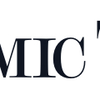Business News

The Economic Times: Breaking news, views, reviews, cricket from across India
Updated: 1 hour 52 min ago
Bullish momentum brewing? 80% of NSE500 stocks now above 50-day average, says Axis Securities
India’s equity markets extended their winning streak for a seventh consecutive session on Wednesday, with a bullish breadth signal flashing across the broader market. According to Axis Securities, more than 80% of the stocks in the NSE500 index closed above their 50-day moving average—a technical threshold that historically suggests broad-based positive momentum.Axis Securities noted that this level of market breadth—defined by a high proportion of stocks trading above their 50-day moving average—has occurred 41 times in the past decade. In 75% of those instances, the NSE500 index posted gains over the next 20 trading sessions. The average return on these winning outcomes was 2.8%, while the average loss on the remaining cases was 2.0%. Overall, the average return stood at 1.6%.“This shift suggests that price action and investor sentiment are turning bullish across a broad set of stocks, not just the index heavyweights,” said Axis Securities.The brokerage added that this could be a good time for investors to reassess their strategy or add to existing winning positions, especially as breakout opportunities emerge in the broader market.The bullish technical signal comes amid sustained gains in Indian equities. On Wednesday, the benchmark BSE Sensex rose 520.90 points, or 0.65%, to close at 80,116.49, reclaiming the 80,000 mark for the first time since the recent correction. The broader Nifty 50 index advanced 161.70 points, or 0.67%, to end at 24,328.95.The Sensex and Nifty have each surged over 8% in the past seven sessions, supported by renewed foreign institutional investment and easing global trade concerns. Market participants have also been encouraged by expectations that U.S. tariffs under the Trump administration will not adversely impact Indian exports.Meanwhile, despite the current bullishness, some technical indicators are beginning to flash early warnings. “The Nifty remained volatile after an optimistic start, supported by positive global cues,” said Rupak De, Senior Technical Analyst at LKP Securities.De pointed out that a Hanging Man candlestick pattern formed on the daily chart, which often serves as a cautionary signal during an uptrend. The Relative Strength Index (RSI) is also nearing a potential negative divergence.He noted that if the Nifty slips below the 24,300 mark, it could correct toward the 24,000–23,900 zone. On the upside, resistance is expected near the 24,450–24,500 range.While the short-term trend remains positive, Axis Securities advised investors to monitor positions closely and look for breakout opportunities amid the broad-based strength. The current setup, supported by historical data, suggests that momentum may continue—though caution is warranted as key resistance levels approach.Also read | Tariff relief hopes buoy D-Street higher for 7th day; Sensex adds 521 pts, Nifty above 24,300(Disclaimer: Recommendations, suggestions, views and opinions given by the experts are their own. These do not represent the views of The Economic Times)
Categories: Business News

